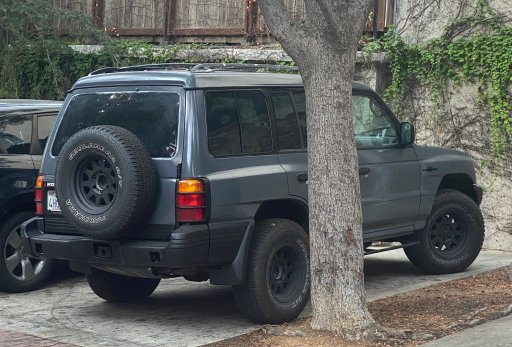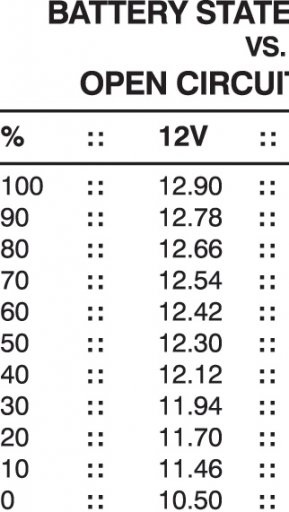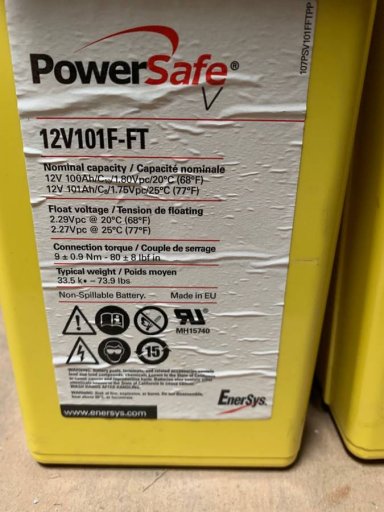
Member III
Hey all,
Gonna be spending some more time on the road soon, and I thought before I did I would install an auxiliary battery/solar setup for the Monty. I was initially thinking of getting a Goal Zero setup, Yeti 400 + Nomad, but the $750+ price tag has me exploring other options, and the idea of doing it for ~$250 and the satisfaction of doing it myself sounds great. That said, I know about as much about wiring as my dog knows about 18th century French literature, so I figured I'd see if somebody could dummy check my logic.

Current situation – 1999 Montero Winter Package with a few mods left to go.
Bottom Line Up Front
Power needs:
TL;DR Questions:
I'm running off of this Outside Magazine article, with a couple modifications. For clarity's sake, I'll start from the panels and work down.
The article uses rigid, permanently-affixed Renogy panels, but I'd prefer using flexible ones that I can keep in the vehicle when not in use. I would make a Cordura pouch for them that closes with velcro to store them. I found these on eBay, but if anybody has an alternate vendor they can recommend please chime in. Not sure if I'd need one or two, but for less than 50 bucks apiece, two seems pretty good. That said, they include a solar controller, with amperage options ranging from 10A to 40A, and this is where my knowledge starts to show its shortcomings. What Amperage should I grab? It looks like a minimal difference in price.
So the panels, which I'd wire together in tandem using this Y-connector, would have their own pouch and that would be one self-contained component of the system. From there, I'd fit the roof with this cable entry gland, which would then be fitted with 20 feet of 10AWG solar extension cables. I'd planned on leaving just the input ends exposed on the roof, so that I could connect and disconnect the panels at will, but if this is a bad idea, please let me know any alternate recommendations. I'd like to be able to take the panels off when I'm parked in the city, for example.
The 10AWG cable would run through the headliner and down to where my soon-to-be-removed CD changer resides, where it would re-emerge and be connected to... well, I'm not sure. According to the Outside Mag guide, I'd hook them to the SB50 Connector, but I'm assuming I could just plug them into the controller included with the solar panels, right? Again, I should point out my knowledge of electrical systems parallels my dog's knowledge of the works of Beaumarchais.
Assuming the controller with the panels is good enough, I'd then run a long micro-usb through the carpet and back up to the headliner to power the Dashcam (question here: would that power line then be dependent on the solar trickle, or could it run off of the battery I wind up connecting it to?). Battery would go in whatever plastic box I can dig up.
Then from the other ports in the controller, I'd run these 2AWG battery cables to a deep cycle, 35AH Mighty Max battery.
I'd bore some holes the other side of the box 12V adapters, which include cables – hopefully sufficient for the application.
In one of the 12V adapters, I'd plug this BESTEK 300W inverter, which I'd secure to the top of the ammo can with hook and loop so I can keep it in place while driving or reposition it outside the truck if I want to charge my laptop at camp. The other 12V port would either be kept free for powering incidental stuff like compressors or, if the mini-USB-to-controller idea wouldn't work, be fitted with a dual-USB phone charger that I'd plug the dashcam into.
And I think that's that. Phew. We made it. Let's have a glass of single malt to celebrate the journey and kick the tires on this wiring plan. If anybody can steer me away from any mistakes I've made, call out things I've forgotten, etc., I'd appreciate it greatly. Things like "Not gonna work, that wire won't fit your controller," or "Make sure you wrap everything in X or you'll set your car on fire."
Thanks in advance, all!
Gonna be spending some more time on the road soon, and I thought before I did I would install an auxiliary battery/solar setup for the Monty. I was initially thinking of getting a Goal Zero setup, Yeti 400 + Nomad, but the $750+ price tag has me exploring other options, and the idea of doing it for ~$250 and the satisfaction of doing it myself sounds great. That said, I know about as much about wiring as my dog knows about 18th century French literature, so I figured I'd see if somebody could dummy check my logic.

Current situation – 1999 Montero Winter Package with a few mods left to go.
Bottom Line Up Front
Power needs:
- Continuous power to DashCam
- As-needed charging of Laptops, Camera Batteries, Cell Phones, etc.
- Potentially powering a cheap fridge/freezer combo to be added later on (Costway or similar)
| Item | Notes |
| 50W Flexible Solar Panels (Possibly x2) | Not sure if 1 or 2 recommended |
| BougeRV Y Connector | |
| Cable Entry Gland | |
| 10AWG Solar Extension Cable | |
| SB 50 Connector Kit | Unsure if needed |
| Renogy 10A Controller | Unsure if needed |
| Mighty Max Deep Cycle Battery, 35AH | |
| 2AWG Cables | |
| 12V Socket Adapters | |
| Bestek 300W Inverter |
TL;DR Questions:
- Is that enough juice (both from the inverter and the panels)
- Are those cables correct?
- Do I need the SB50 Connector Kit?
- Do I need a better-brand controller, or are the included ones OK?
- Can I leave the end of the extension cables exposed on the entry gland, so I can detach the panels at will?
I'm running off of this Outside Magazine article, with a couple modifications. For clarity's sake, I'll start from the panels and work down.
The article uses rigid, permanently-affixed Renogy panels, but I'd prefer using flexible ones that I can keep in the vehicle when not in use. I would make a Cordura pouch for them that closes with velcro to store them. I found these on eBay, but if anybody has an alternate vendor they can recommend please chime in. Not sure if I'd need one or two, but for less than 50 bucks apiece, two seems pretty good. That said, they include a solar controller, with amperage options ranging from 10A to 40A, and this is where my knowledge starts to show its shortcomings. What Amperage should I grab? It looks like a minimal difference in price.
So the panels, which I'd wire together in tandem using this Y-connector, would have their own pouch and that would be one self-contained component of the system. From there, I'd fit the roof with this cable entry gland, which would then be fitted with 20 feet of 10AWG solar extension cables. I'd planned on leaving just the input ends exposed on the roof, so that I could connect and disconnect the panels at will, but if this is a bad idea, please let me know any alternate recommendations. I'd like to be able to take the panels off when I'm parked in the city, for example.
The 10AWG cable would run through the headliner and down to where my soon-to-be-removed CD changer resides, where it would re-emerge and be connected to... well, I'm not sure. According to the Outside Mag guide, I'd hook them to the SB50 Connector, but I'm assuming I could just plug them into the controller included with the solar panels, right? Again, I should point out my knowledge of electrical systems parallels my dog's knowledge of the works of Beaumarchais.
Assuming the controller with the panels is good enough, I'd then run a long micro-usb through the carpet and back up to the headliner to power the Dashcam (question here: would that power line then be dependent on the solar trickle, or could it run off of the battery I wind up connecting it to?). Battery would go in whatever plastic box I can dig up.
Then from the other ports in the controller, I'd run these 2AWG battery cables to a deep cycle, 35AH Mighty Max battery.
I'd bore some holes the other side of the box 12V adapters, which include cables – hopefully sufficient for the application.
In one of the 12V adapters, I'd plug this BESTEK 300W inverter, which I'd secure to the top of the ammo can with hook and loop so I can keep it in place while driving or reposition it outside the truck if I want to charge my laptop at camp. The other 12V port would either be kept free for powering incidental stuff like compressors or, if the mini-USB-to-controller idea wouldn't work, be fitted with a dual-USB phone charger that I'd plug the dashcam into.
And I think that's that. Phew. We made it. Let's have a glass of single malt to celebrate the journey and kick the tires on this wiring plan. If anybody can steer me away from any mistakes I've made, call out things I've forgotten, etc., I'd appreciate it greatly. Things like "Not gonna work, that wire won't fit your controller," or "Make sure you wrap everything in X or you'll set your car on fire."
Thanks in advance, all!






